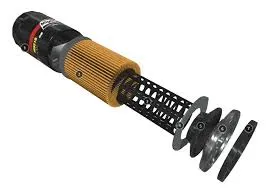Nov . 10, 2024 05:28 Back to list
Hollow Plunger Hydraulic Cylinders for Efficient Industrial Applications
Hollow Plunger Hydraulic Cylinder A Comprehensive Overview
In the realm of hydraulic systems, the hollow plunger hydraulic cylinder stands out as a crucial component known for its versatility and efficiency. These cylinders are engineered to perform a variety of lifting and pushing applications across multiple industries, including construction, manufacturing, and automotive sectors. This article will delve into the features, advantages, applications, and considerations associated with hollow plunger hydraulic cylinders.
What is a Hollow Plunger Hydraulic Cylinder?
A hollow plunger hydraulic cylinder is a type of actuator that uses hydraulic fluid to create motion. The key characteristic of this cylinder is its hollow plunger or piston, which allows other components or tools to fit inside it. This unique design enables the cylinder to exert force while also accommodating various attachments, making it a valuable asset in numerous operations where space and strength are priorities.
Features of Hollow Plunger Hydraulic Cylinders
Hollow plunger hydraulic cylinders come with several distinctive features
1. Compact Design The hollow design allows for easier integration into tight spaces, making it suitable for specialized applications where standard cylinders might not fit.
2. High Load Capacity These cylinders can generate significant force, enabling them to lift heavy loads efficiently. This makes them ideal for heavy-duty applications.
3. Versatile Attachments The ability to utilize various tools or rods through the hollow plunger enhances the cylinder’s versatility. This feature allows operators to customize the equipment based on specific tasks.
4. Durable Construction Typically made from high-strength materials, hollow plunger cylinders are designed to withstand demanding environments while offering extended service life.
5. Safety Features Many modern hydraulic cylinders come equipped with safety valves and overload protection, which help prevent accidents and ensure operator safety.
Advantages of Hollow Plunger Hydraulic Cylinders
Hollow plunger hydraulic cylinders offer several advantages that contribute to their widespread use in various applications
- Space Efficiency Their compact nature means operations can be performed in limited spaces without sacrificing power or performance.
hollow plunger hydraulic cylinder products

- Enhanced Control They provide precise control over the movement, allowing for smooth operation even with large loads.
- Multi-Functional Use The ability to attach different tools transforms a hollow plunger cylinder into a multi-purpose tool — capable of performing tasks ranging from lifting and pushing to pressing and splitting materials.
- Cost-Effective Investing in a hollow plunger hydraulic cylinder may prove economical in the long run, as they tend to require less maintenance than traditional cylinders.
Applications
Hollow plunger hydraulic cylinders are widely used in various scenarios, including
- Construction Industry For lifting heavy materials, shifting structures, or even assembling large components where space is constrained.
- Automotive Repairs They are employed in automotive service to lift parts and components for repairs or replacements.
- Manufacturing Processes Used in assembly lines and production facilities for tasks such as pressing, forming, and moving components.
- Material Handling In warehouses and distribution centers, they facilitate the lifting and transporting of heavy goods.
Considerations
While hollow plunger hydraulic cylinders provide numerous benefits, it’s essential to consider certain factors when selecting and using them. Factors such as load capacity, size, and pressure ratings must align with the specific application requirements. Furthermore, regular maintenance checks are crucial to ensure longevity and safe operation, preventing leaks or malfunctions.
Conclusion
Hollow plunger hydraulic cylinders are indispensable tools in modern industrial applications. Their unique design, combined with ease of use and high performance, positions them as a preferred choice for many professionals across various sectors. Understanding their features, advantages, and applications can help industries make informed decisions for more effective operations.
-
1.5 Ton Flipping Oil Cylinder 70/82-40-217-720 - Hebei Shenghan Hydraulic Machinery Co., Ltd.|Precision Engineering&Customizable Hydraulic Components
NewsSep.01,2025
-
1.5 Ton Flipping Oil Cylinder 70/82-40-217-720 - Hebei Shenghan
NewsSep.01,2025
-
1.5 Ton Flipping Oil Cylinder 70/82-40-217-720-Hebei Shenghan Hydraulic Machinery Co., Ltd.|Customization, Chrome-Plated Piston Rod, Indel Seals
NewsSep.01,2025
-
1.5 Ton Flipping Oil Cylinder 70/82-40-217-720-Hebei Shenghan|Customizable Hydraulic Cylinder&Durable Oil Cylinder
NewsSep.01,2025
-
1.5 Ton Flipping Oil Cylinder 70/82-40-217-720 | Hebei Shenghan
NewsSep.01,2025
-
1.5 Ton Flipping Oil Cylinder 70/82-40-217-720 - Hebei Shenghan Hydraulic Machinery Co., Ltd.
NewsSep.01,2025
